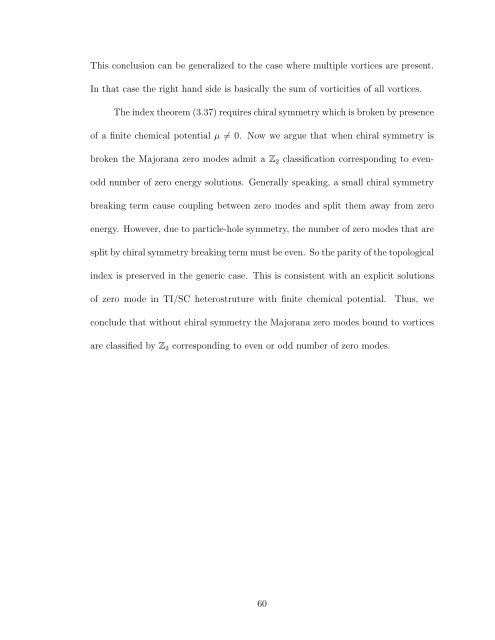ABSTRACT - DRUM - University of Maryland
ABSTRACT - DRUM - University of Maryland
ABSTRACT - DRUM - University of Maryland
Create successful ePaper yourself
Turn your PDF publications into a flip-book with our unique Google optimized e-Paper software.
This conclusion can be generalized to the case where multiple vortices are present.<br />
In that case the right hand side is basically the sum <strong>of</strong> vorticities <strong>of</strong> all vortices.<br />
The index theorem (3.37) requires chiral symmetry which is broken by presence<br />
<strong>of</strong> a finite chemical potential µ ≠ 0. Now we argue that when chiral symmetry is<br />
broken the Majorana zero modes admit a Z 2 classification corresponding to evenodd<br />
number <strong>of</strong> zero energy solutions. Generally speaking, a small chiral symmetry<br />
breaking term cause coupling between zero modes and split them away from zero<br />
energy. However, due to particle-hole symmetry, the number <strong>of</strong> zero modes that are<br />
split by chiral symmetry breaking term must be even. So the parity <strong>of</strong> the topological<br />
index is preserved in the generic case. This is consistent with an explicit solutions<br />
<strong>of</strong> zero mode in TI/SC heterostruture with finite chemical potential.<br />
Thus, we<br />
conclude that without chiral symmetry the Majorana zero modes bound to vortices<br />
are classified by Z 2 corresponding to even or odd number <strong>of</strong> zero modes.<br />
60
















